Cooking up Amazing Trips contains affiliate links. If you purchase through these links, I may earn a commission at no extra cost to you. See my Disclosure Policy for more information. Thanks for supporting my blog!
Bali in 7 days
Bali is a paradise with a unique combination of natural beauty and rich cultural heritage. Join me on this tour to explore its stunning beaches, ancient temples, and traditions in 7 days.
From the serene beauty of lush rice terraces to the awe-inspiring volcanic landscapes, each day in Bali promises a new and exciting adventure. Are you ready to explore?
Here, you will find everything you need to know to make your trip unforgettable. I include information of interest, advice, and details of the places to visit.
As always, I will start with some general information about the island and then detail the main points of interest in a relaxed itinerary with a map!
This is the list of everything you will find in this article:
A. Bali – Information of Interest

Location
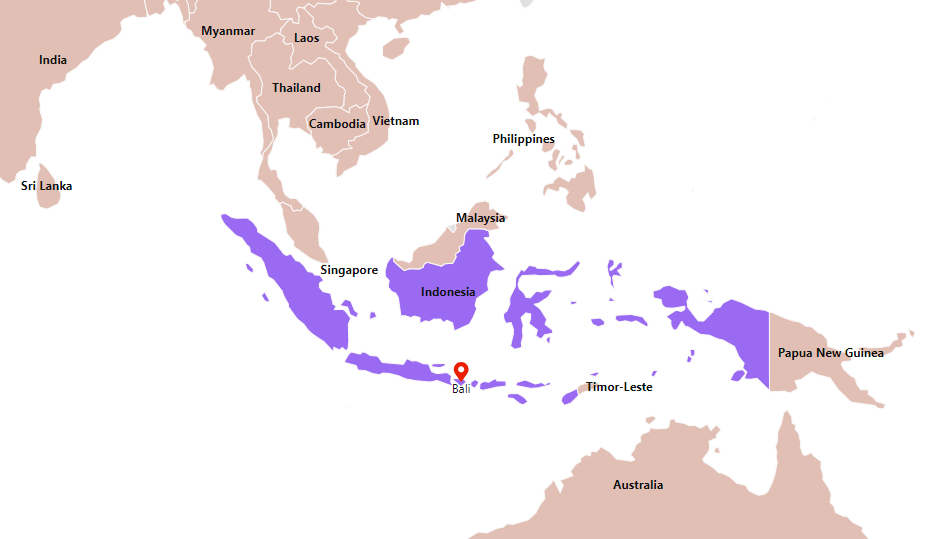
Bali is one of the more than 17,500 islands of the Republic of Indonesia, the largest archipelago in the world. It is situated on the equator between Asia and Oceania.
It is also located in the so-called Ring of Fire, one of the regions with the most significant seismic and volcanic activity on the planet.
The island of Bali, together with the Nusa islands (Nusa Penida, Nusa Lembongan and Nusa Ceningan), form the province of Bali and are positioned in central Indonesia.
Bali is one of the most visited islands in Indonesia, if not the most.
Its capital is Denpasar, while Indonesia’s is Jakarta.
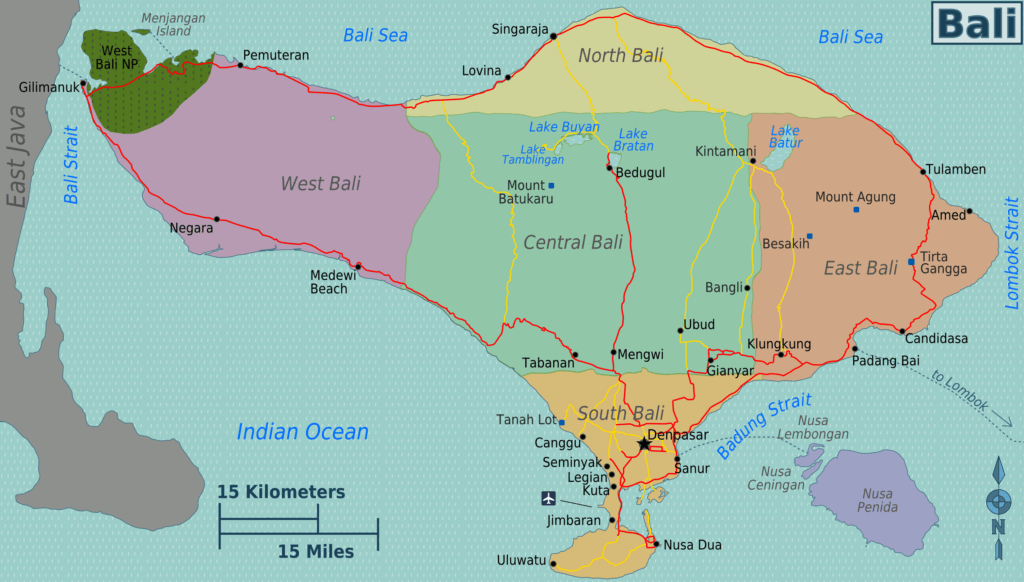
Area
Bali has an area of 5,636 km² (2176 sq mi) and a coastline of 593 km (370 mi). Its length, from west to east, is 145 km (90 mi) and 80 km (50 mi) from north to south.
Mount Agung (3,142 m) is the highest point on the island and one of its active volcanoes.
Population

In 2024, Bali province’s population is 4.5 million, accounting for 1.57% of Indonesia’s total population (281.6 million).
The capital city, Denpasar, is the most densely populated, with almost 900,000 inhabitants.
Demonym
Indonesian.
Language

The official language in Bali is Indonesian, but the Balinese also have their own local language called Balinese (Bahasa Bali). However, English is widely spoken, and you should have no problem communicating.
Remember that you can check the language spoken in each country using the tables that I attach to my articles Countries by Language and Best Time to Go.
B. Bali – Practical Information
Currency
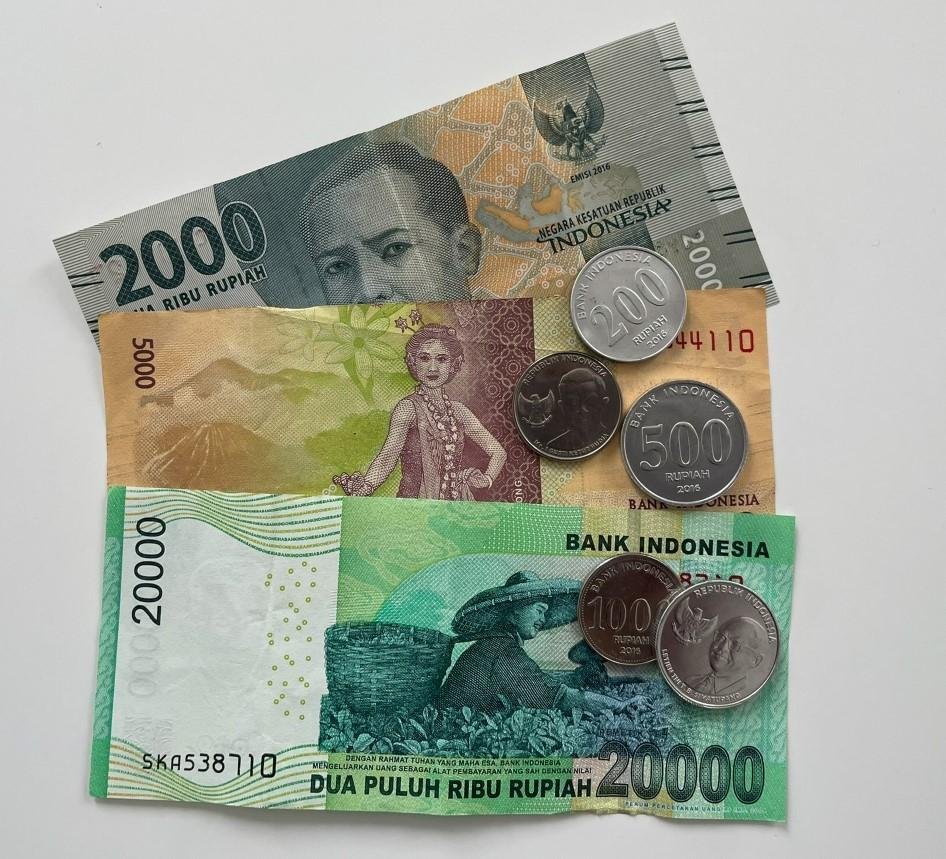
The official currency is the Indonesian Rupiah (IDR), although, as it is a very touristy place, many establishments also accept American dollars. However, it is more advisable to pay in local currency.
The exchange rate fluctuates, but as a guide, around 10,000 rupees is equivalent to €0.60 euros or £0.50.
In my post Currency exchange, cards and cash abroad (Complete Guide), there is a table that allows you to see the currency used by entering the name of the country you are interested in. Additionally, this article provides all the essential information you need to know about money and travelling.
Plugs and Voltage

Most plugs in Singapore are European style, types C and F, characterised by the two round slots.
The voltage is 220 volts, and the frequency is 50 Hz.
Remember that you can refer to my article Plug Types by Country to find out about the different types of plugs used in each country and the corresponding voltage. This will help you determine if you need an adapter and the specific type required.
This information, along with everything else you might need to ensure your trip goes smoothly, is available in the Travel Logistics section.
When to go and for How long

*️⃣ Bali has a tropical climate in which there are only 2 seasons:
- The wet season (October–April) is characterised by torrential rains, but it is not that it rains all the time. Due to the high humidity, the temperature feels hotter.
- The dry season (April–October), also the high season in Bali, has limited rainfall.
That is why the best time to visit Bali is from May to September. However, it can be visited in any month, as the temperatures are very pleasant all year round and with few variations (except in mountainous areas).
If you want to pick a different travel destination based on the most suitable time to visit, see my posts Best Time to Go and Where to Travel Each Month. It will help you plan your trip better.

*️⃣ About the duration of the trip, if you want to fully enjoy all the charms that the island has to offer without feeling stressed, it is advisable to stay for at least 7 days.
In my posts, How Many Days I Need to Visit Each Country and How Many Days I Need to Visit Each City, I explain the number of days needed to visit each country and the most tourist cities.
C. How to Get Around Bali

The best way to get around the island of Bali is to rent a car with a driver or even booking excursions for the following reasons:
- Public transportation is not very efficient, so you will waste a lot of time getting from one place to another, and you will not be able to get to all the places you want.
- Considering the state of the roads, the signage, and the traffic chaos, I do not recommend renting a car on your own. Although you already know that I really like the independence this gives me on my travels, Bali is not the best place for that.
- It’s cheaper. While it may not seem like it, renting a car with a driver for the entire day to take you to the places you want to visit is cheaper than just renting the vehicle. Plus, you can forget about any worries.
- Some drivers are also guides; what else could you ask for?
- 🚐 Transfers: Book your airport transfers or arrange transportation in advance with GetTransfer.com.
- 🚙 Private Driver: Hire a private driver for a full day with Viator and discover the island at your own pace.
- 📷 Tours & Activities: Book fun experiences, guided tours, and skip-the-line tickets in advance with GetYourGuide or Viator.
For short trips, I recommend that you use Grab or GoJeck, which are like Uber but Asian. They work great, and both offer cars and motorcycles, which is ideal if you are travelling alone.
If, despite what I mentioned above, you are still considering renting a car, I recommend reading my post, Car Rentals (Complete Guide), where I provide all the necessary information and tips to avoid any surprises when renting a vehicle.
🚗 Car Rentals: compare reliable car rental providers using Discover Cars or Auto Europe.
D. Bali – Cultural Information
Flag
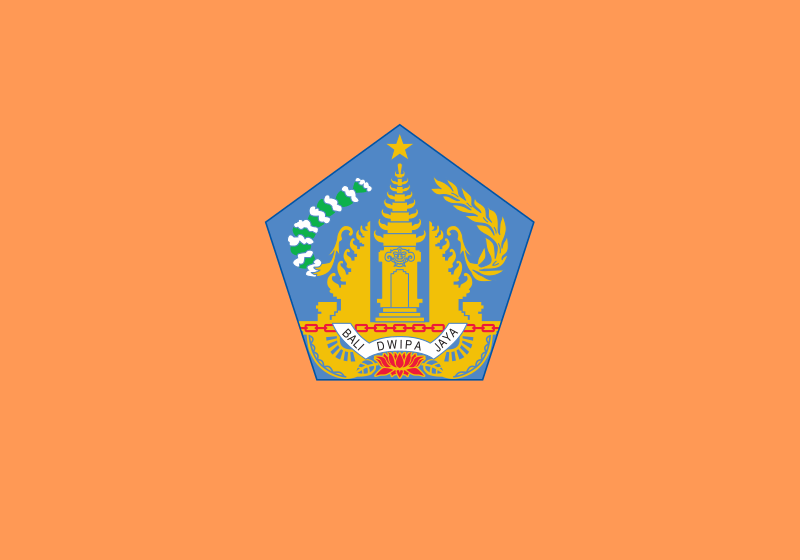
The flag of Bali has a light saffron or orange-yellow background, with the emblem of the province of Bali in the centre. The coat of arms of Bali features a Barong, a traditional Balinese mask symbolising a protective spirit, along with a lotus flower, fans (kipas), and a banner with the words “Bali Dwipa Jaya,” meaning “Glorious Island of Bali.”
However, the Indonesian flag is the one you will find on all official buildings. This is divided into 2 symmetrical horizontal stripes. The upper stripe is red, representing courage or physical life, while the lower one is white, representing purity or spiritual life.
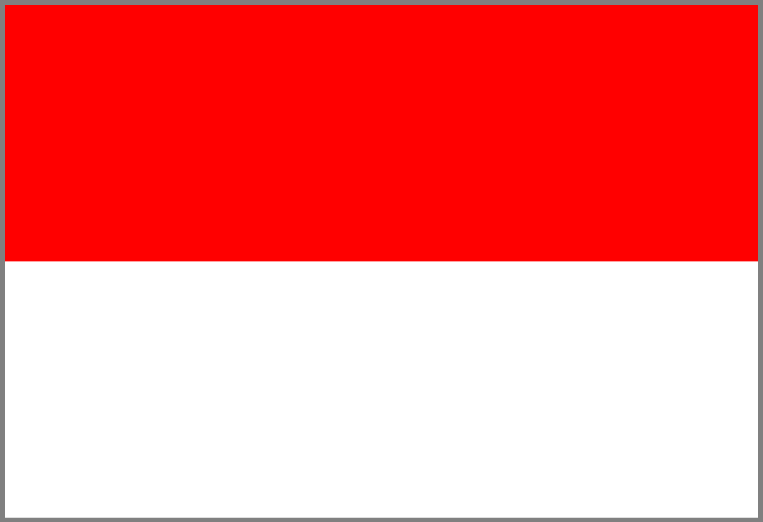
Origin and Brief History of Bali
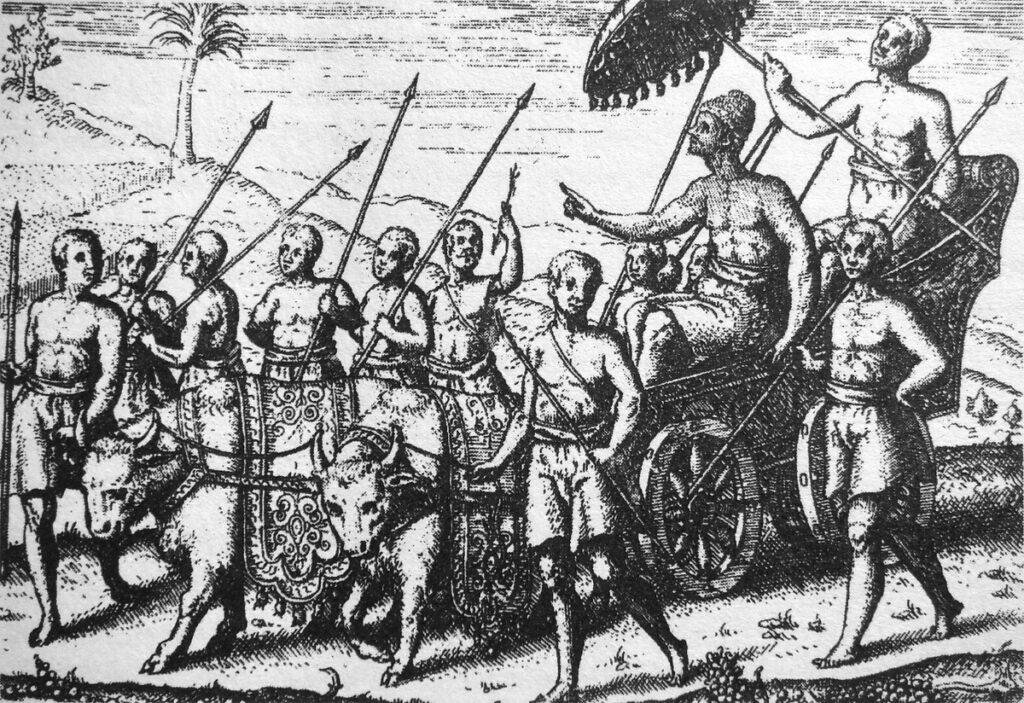
Next, I will provide a brief overview of Bali’s history to help you better comprehend its culture and its people:
- The Balinese are descendants of a prehistoric race that migrated to the Indonesian archipelago around 2500 BC.
- In around 100 BC, Hindu people arrived at the island.
- The island gained independence from Java in the late 15th century and was governed by the Majapahit dynasty until 1908.
- The first Europeans arrived in the late 16th century, and the Dutch established a trading colony in the 17th century, leading to conflicts with the native population.
- Bali was under Japanese occupation during World War II and later by the Dutch.
- In 1949, Indonesia became independent of the Dutch.
- After its independence, Bali has remained a peaceful haven. Unlike other parts of Indonesia, Bali has not had any independence movements.
The name Bali comes from Sanskrit, where “Wali” means offering, referring to its spirituality and religious devotion. For this reason, it is also known as the Island of the Gods.
Another of its names is the Island of a Thousand Temples, due to the enormous number of them that you can find. Apparently, it has more than 10,000! Obviously, I didn’t get a chance to count them, but considering all the ones I saw, I believe it!
Interesting Facts about Bali

- Bali is the only island in Indonesia where Hinduism dominates over Islam. The island is home to a distinctive form of Hinduism known as ‘Agama Hindu Dharma’, widely recognised as “Balinese Hinduism”.
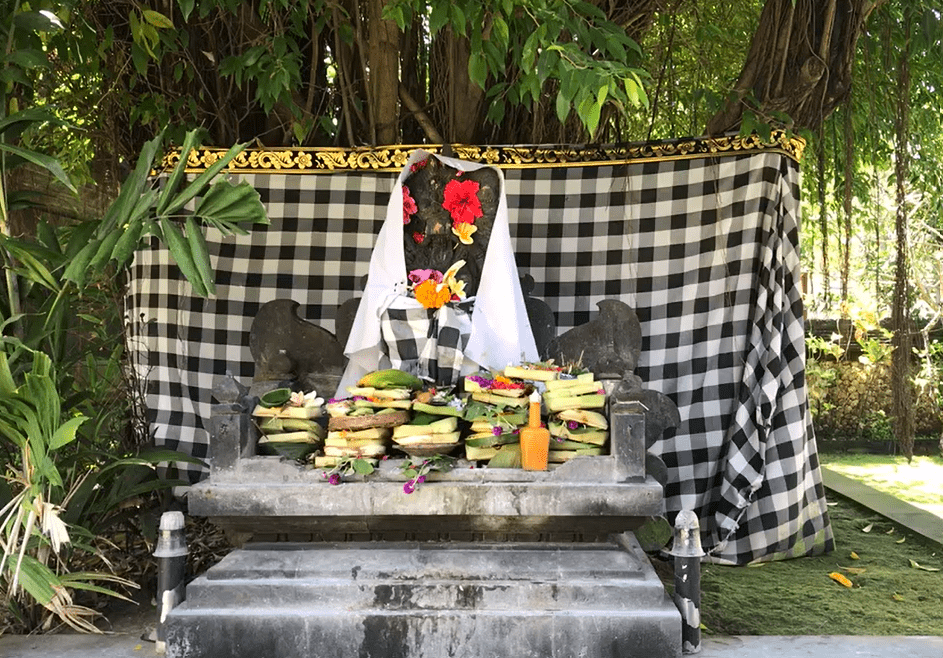
- It is one of the few places where civet coffee (Kopi Luwak) is produced. Due to its unique production process, this is one of the most exclusive and expensive coffees in the world. It is made from coffee beans that have been partially digested by civets (small cat-like animals) and then excreted. The beans are then cleaned and lightly roasted.
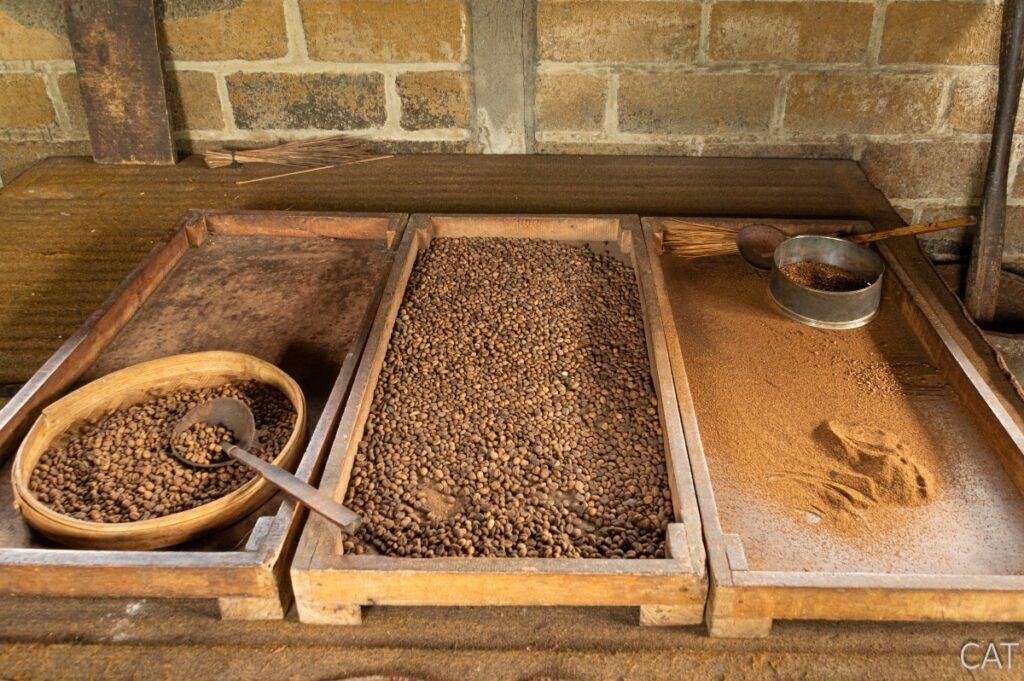
- Bali has three different calendars:
- Saka, based on lunar cycles.
- Pawukon, 210 days, linked to rice cultivation cycles.
- Gregorian. It’s the most used calendar in the world.
- The island features both white sand beaches and black sand beaches of volcanic origin, creating a fascinating contrast.
- This small paradise is situated in the heart of the Coral Triangle, home to the broadest marine biodiversity on the planet.
- On New Year’s Day (Saka calendar), the “Day of Silence” called Nyepi is celebrated the day after the new moon in March. This profoundly spiritual celebration paralyses the island for 24 hours to allow for reflection, meditation, and self-purification. No lights, music, or noise are permitted, and all transportation is suspended.
- Although it is not advisable to drink tap water, ice is safe as it is under the jurisdiction of the local government. The government understands the importance of cold drinks for tourists and has taken measures to ensure their safety.
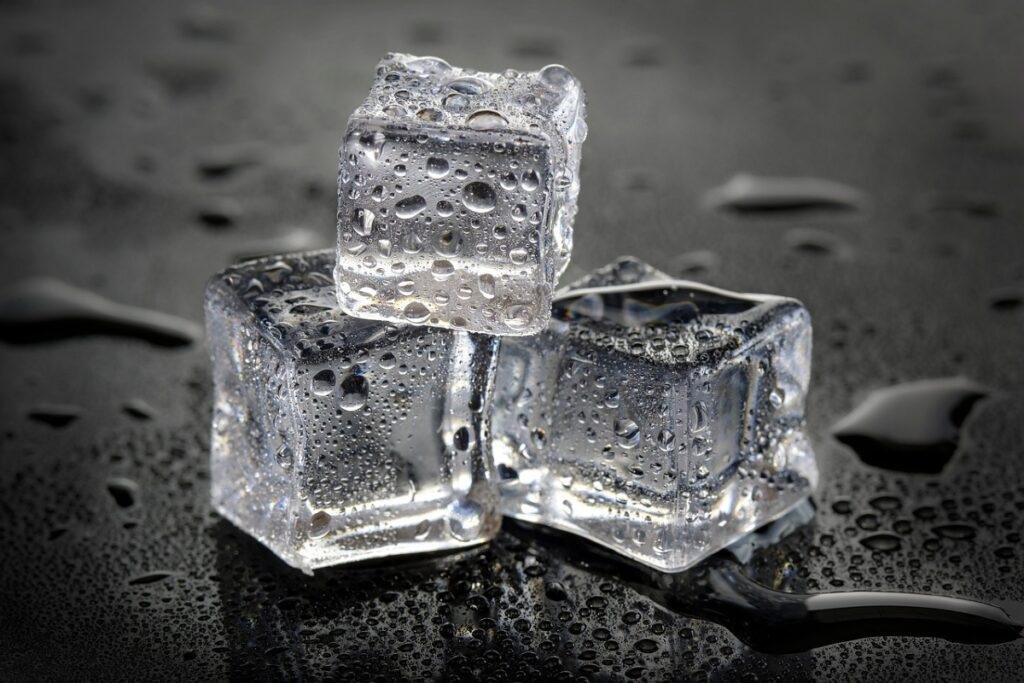
- Be careful with drugs! In Bali, the use or possession of drugs is severely punished, with very harsh penalties, including life imprisonment and the death penalty.
E. Bali: 7-Day Itinerary + Map
Bali is a relatively small island, but it has many things to see and do. Depending on the type of trip you are looking for, it may be more advisable to stay in one area or another.
In our case, as three friends travelling on a tight budget, we opted for a hotel near Legian Beach in the southern part of the island to experience the vibrant atmosphere.
Below, you will find the map of how to visit Bali in 7 days. Each day is colour-coded and numbered to indicate the order of the sites to visit.
1. Bali in 7 days – Day 1

We arrived in Bali the night before after spending four days in Singapore. It’s our first day on the island, and we’re going to dedicate it to relaxing since it has been several very intense days.
Padma Beach (Legian / Kuta)
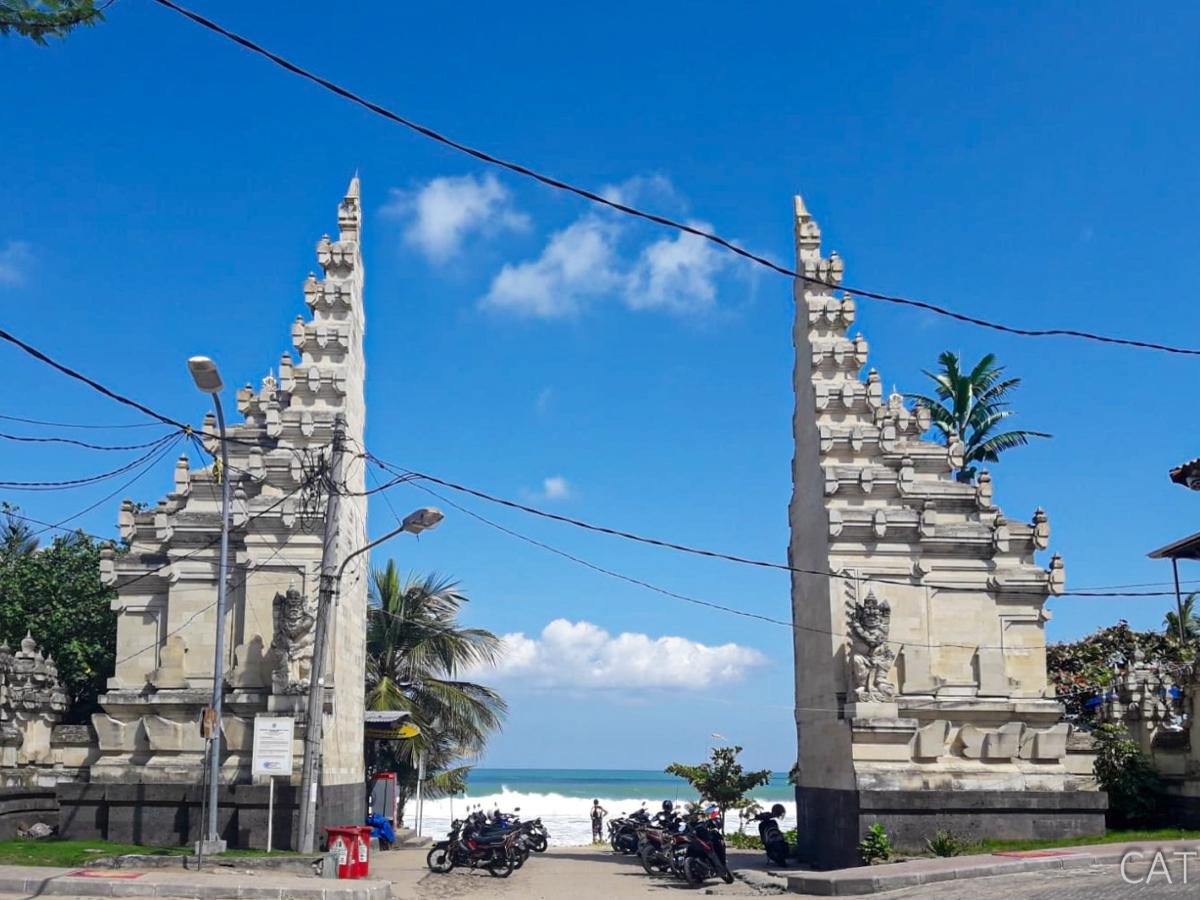
The beach next to our hotel is called Padma. It is part of the famous Legian Beach, recognised as one of the most beautiful on the island.
It is about 2.5 km long (1.55 mi) and is linked to Kuta Beach, which is an additional almost 3 km long (1.86 mi).
We did not know, and that should be taken into account if you are looking to swim, that Padma Beach is a surfer’s beach because it usually has quite a lot of waves, and swimming can be dangerous.
However, it has everything you may need on a day at the beach: umbrellas, sun beds, toilets, and bars 😎
Legian
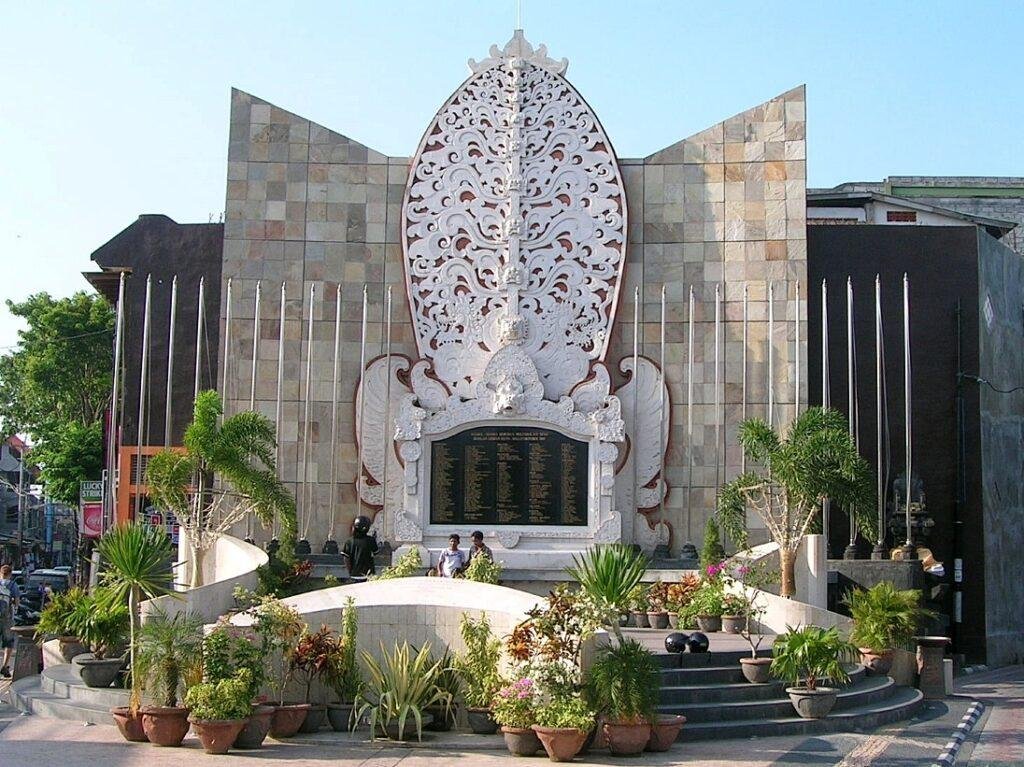
We then spent the afternoon touring Legian, a very lively city with numerous bars, restaurants, boutiques, craft shops, and, of course, souvenir shops.
In addition, you will find numerous options for booking excursions, both on the island of Bali and to neighbouring islands. So we took the opportunity to book a two-day excursion to the Gili Islands.
Sky Garden
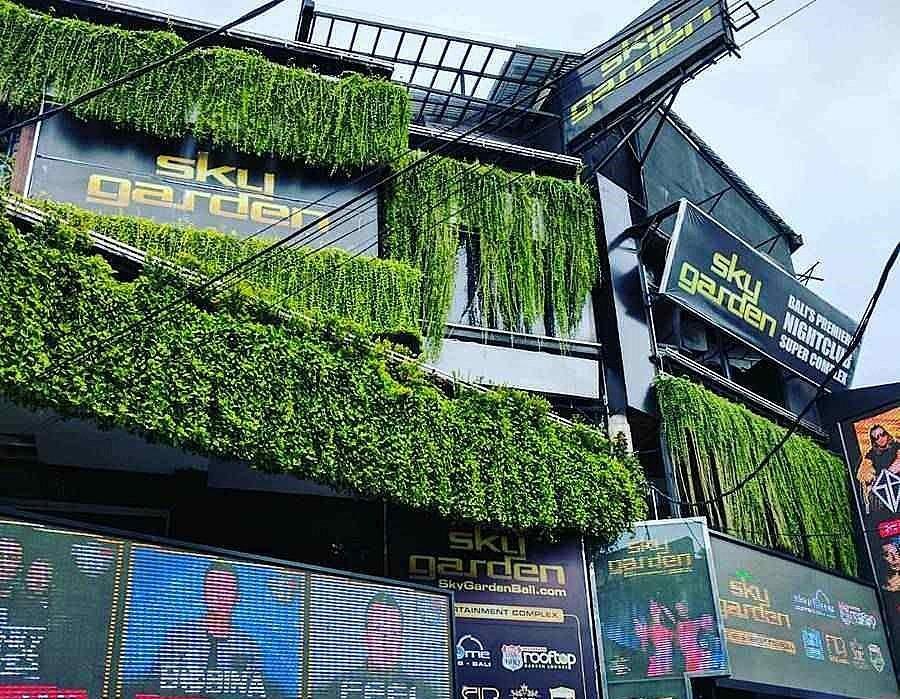
To end the day, we went to one of the most famous pubs in Bali, the Sky Garden. Entry was free for girls until 11 p.m., so why not get in?
I was personally a bit disappointed, but everyone has their own taste.
2. Bali in 7 days – Day 2

After a first relaxing day on the beach, it’s time to explore other charms that the beautiful island of Bali has to offer.
Coffee Plantation (Kopi Luwak)
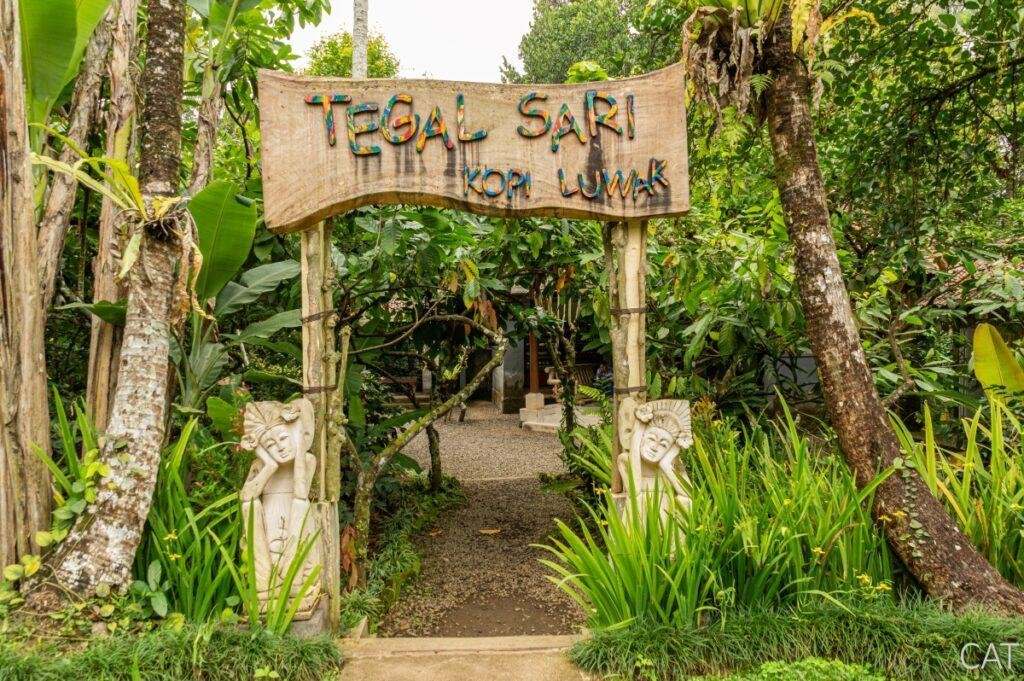
The first stop is at a plantation where one of the most exclusive and expensive coffees in the world is produced: Kopi Luwak.
The most fascinating aspect of this coffee is its unique production process: the beans are first digested by the civet, a small Asian cat, and then cleaned and roasted. Thanks to the animal’s digestive process, the coffee is smoother and more aromatic.
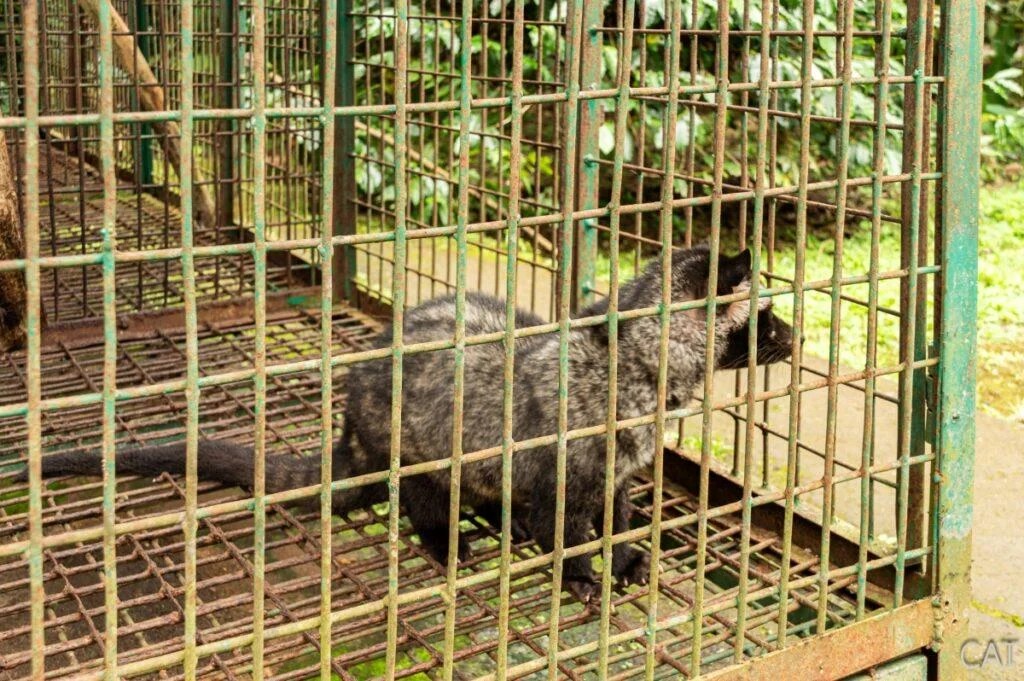


Initially, I had doubts about trying it, but I’m a coffee lover, so I did it. And I have to admit that it was delicious.
Jatiluwih Rice Terraces

Next, we will visit one of the largest and most beautiful rice fields in Bali: Jatiluwih. Their name means “really beautiful” in Balinese, and they indeed are.


Bali’s rice terraces are unique because of their unique irrigation system, called “subak,” which was developed during the 9th century and has been part of UNESCO World Heritage since 2012.
This traditional irrigation method is based on the Balinese Tri Hita Karana philosophy, which harmoniously unites the natural, spiritual and human worlds. It is an ecological system in which the flow of water is controlled from the temples located on the different terraces.


Another very famous rice field is Tegallalang, which is also near Ubud but smaller and more touristy (because it is free).
Handara Gate

After travelling about 24 km further north, we arrive at the iconic Handara Gate.
It’s just the entrance to a resort with a golf course, so don’t expect a temple or anything like that. However, it has become one of the most popular photo spots in Bali.
When I visited, it was free, but now you have to pay and wait in line if you want to take a picture.

Gobleg Viewpoint — The Twin Lakes


Less than 9 km away is the Gobleg viewpoint, from which we can see the Twin Lakes: Buyan and Tamblingan.
Bali’s twin lakes, Buyan and Tamblingan, are stunning lakes located within the Batukaru Nature Reserve in the Wanagiri village area.
Located within the caldera of the extinct Bedugul volcano, the lakes were once a single body of water until a landslide divided them in the 1800s. Today, they are surrounded by coffee plantations, vegetable fields, and traditional rice paddies.
Pura Ulun Danu Batur
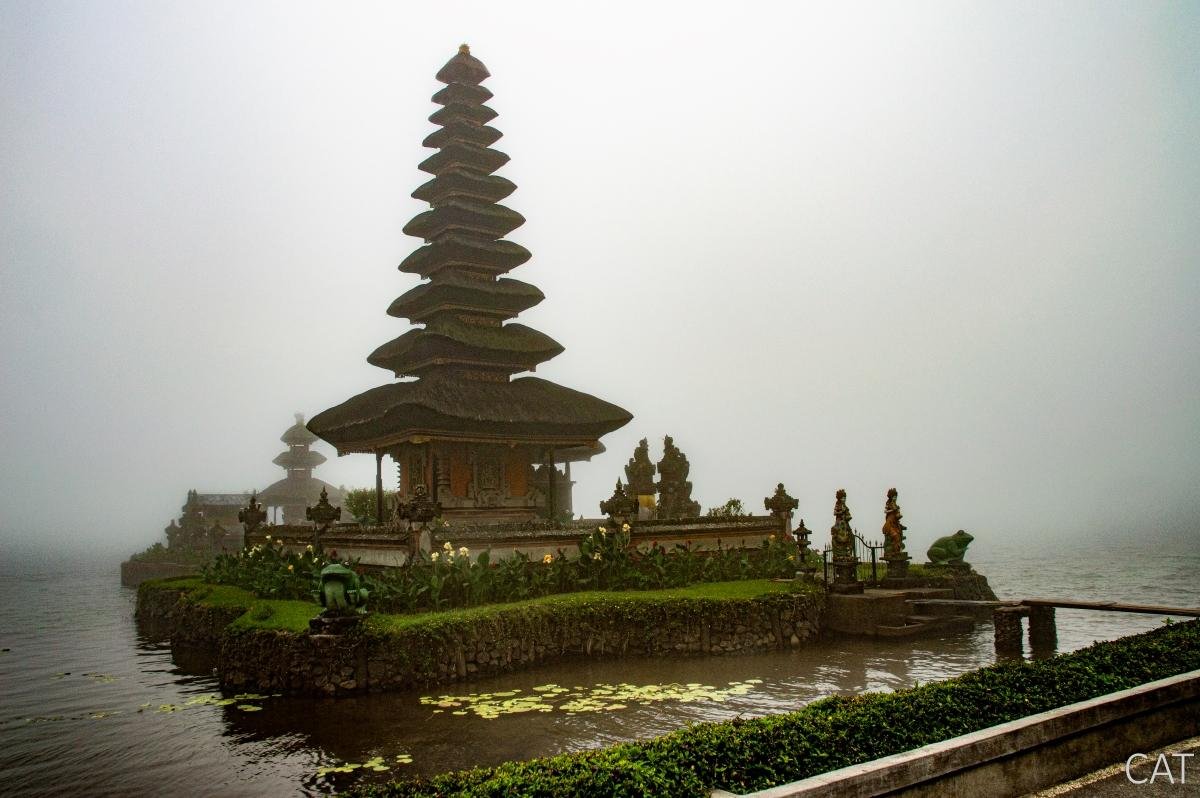
We head east to visit one of Bali’s best-known temples: Pura Ulun Danu Batur, also known as the “Water Temple.”
It is so famous that you will even see it on the 50,000 rupee banknotes, and it has been part of the UNESCO World Heritage since 2012.
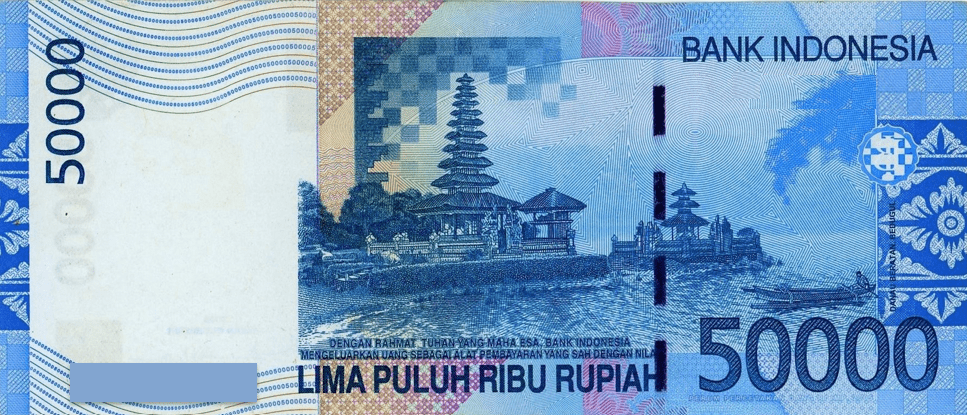
The temple, situated on the shores of Lake Batur, was rebuilt in 1926 after the volcano’s eruption. It is dedicated to the god Vishnu and the goddess of Lake Batur, Danu.
Being one of the most important, you will have to compete with many other tourists to get your photo. Unfortunately, when we arrived, there was so much fog that we could barely see it.


Nungnung Waterfall
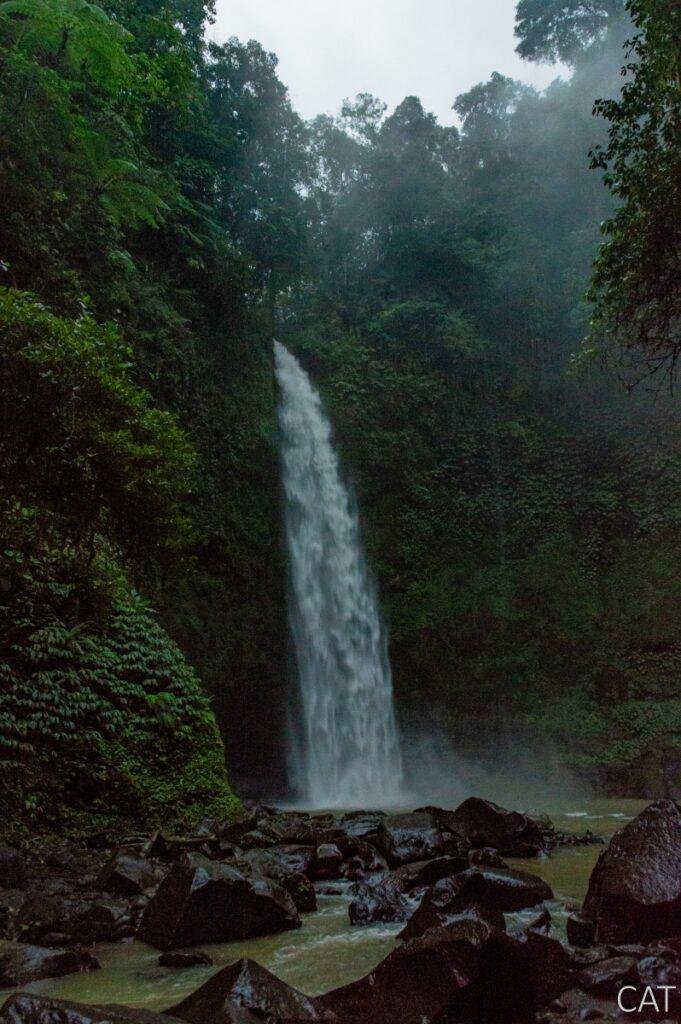
The last stop of the day will be the Nungnung Waterfall, about 30 km further to the southwest.
With a 50-metre drop, it is one of the highest in Bali. At its base, there is a pool where you can swim. It may not be as famous as Munduk, but it is prettier and has fewer tourists.
To get there, you have to go down about 500 steps, but it is worth it.
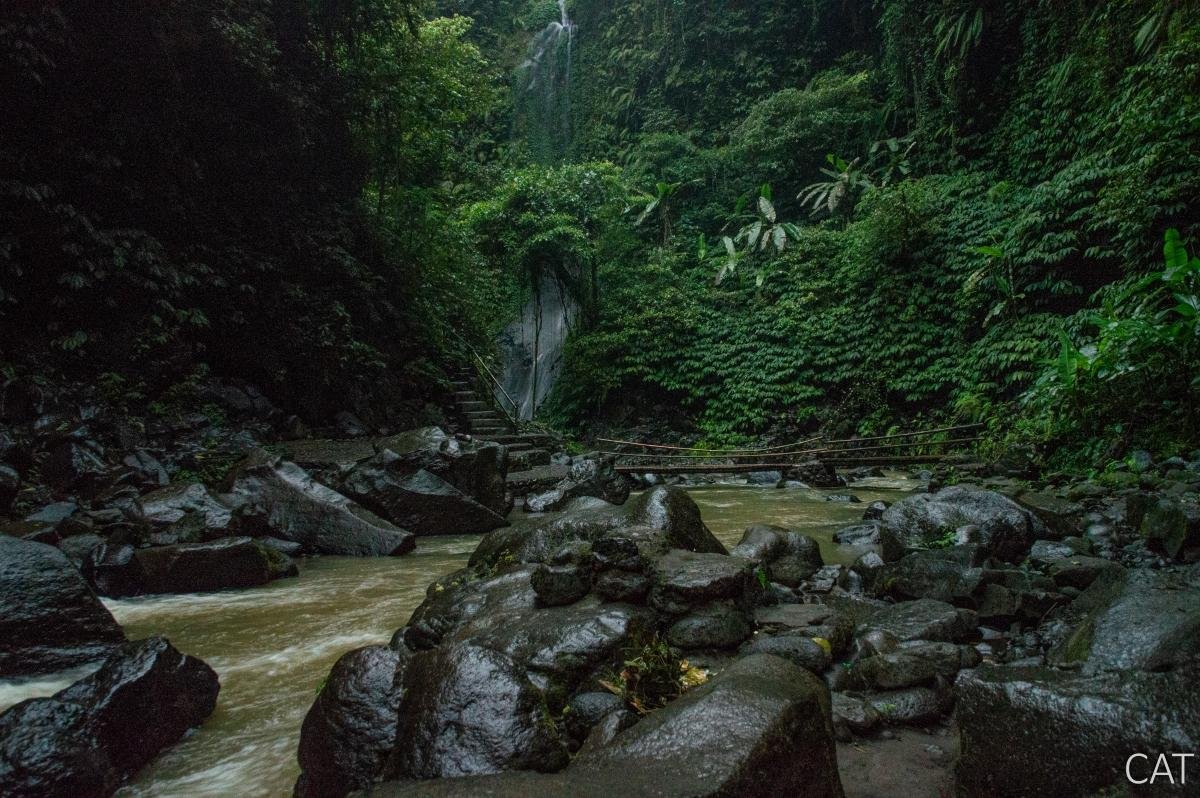
3. Bali in 7 days – Day 3

After a busy day yesterday, today is the time to relax.
Nusa Dua Beach
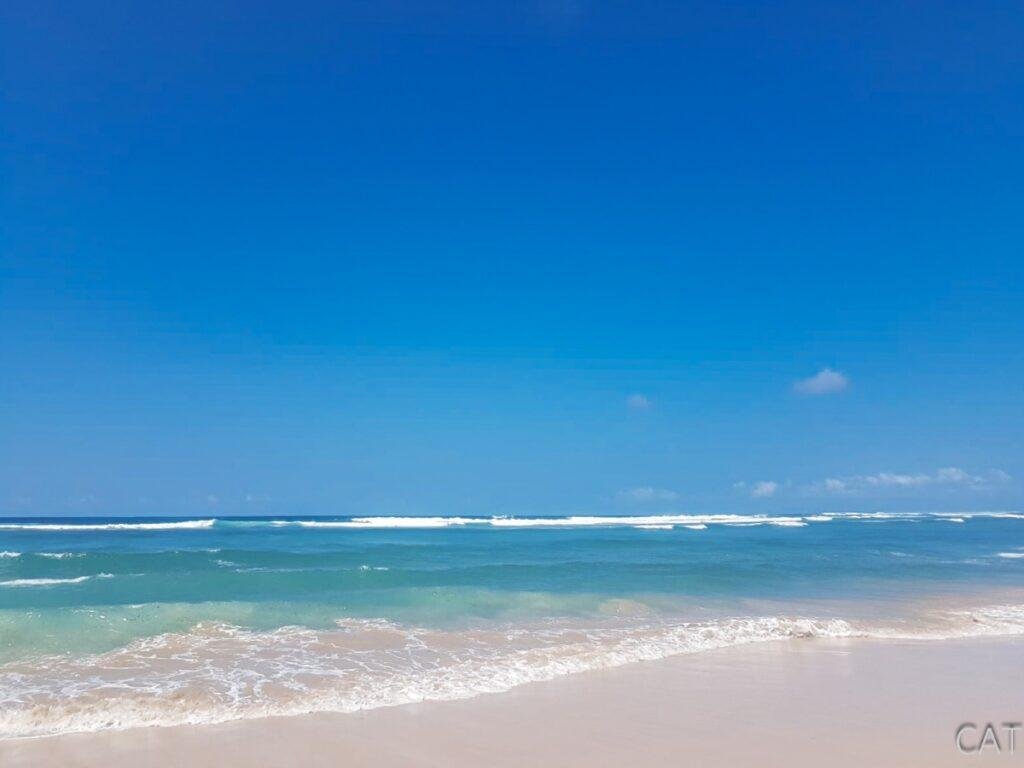
The option chosen for today is Nusa Dua Beach, which is considered the area with the best beaches in Bali.
Located on the Bukit peninsula, south of Bali, you can find the highest number of luxurious resorts on the island. And it is not surprising, with its long white sand beaches, crystal clear waters, and numerous services to suit all tastes.
Without a doubt, it is a perfect place to spend a day on the beach.
Uluwatu Temple
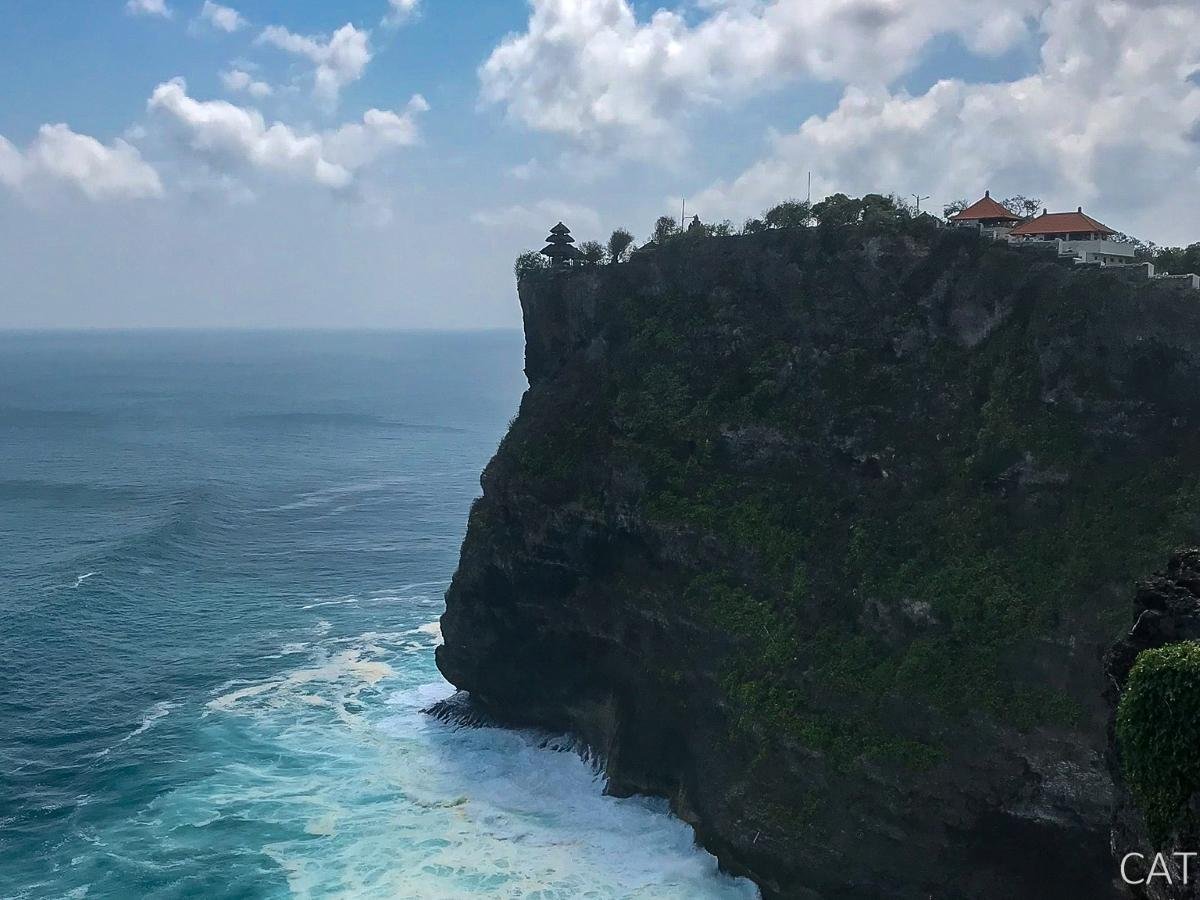
After eating, we head to one of the most important and sacred temples in Bali: the Pura Luhur Uluwatu Temple.
It is about 20 km from Nusa Dua, at the westernmost end of the Bukit peninsula, but we want to see this beauty.
The temple, located on the edge of a 75-metre-high cliff, was built in the 11th century to honour the sea goddess Dewi and is believed to protect Bali from demons.
Be careful around the temple because dozens of monkeys live here, and they are already famous for being petty thieves. They steal anything they catch and only return it in exchange for food. So smart!
Beachwalk Shopping Center
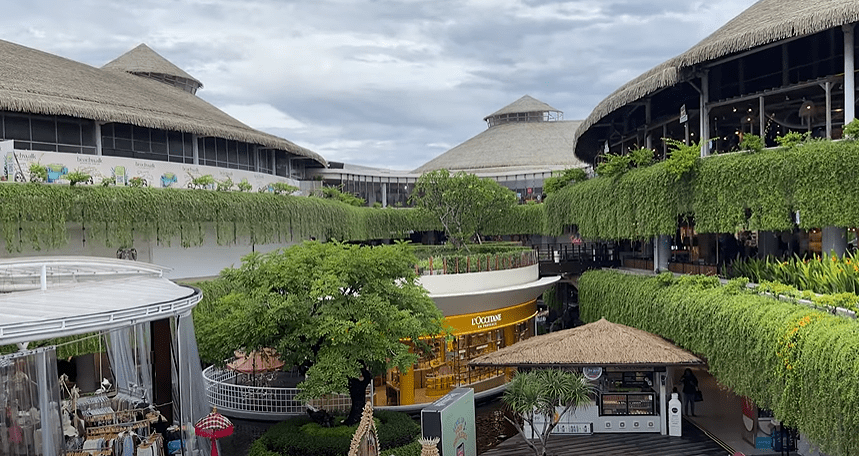
Back in Kuta, we’re going to take a look around the Beachwalk Shopping Centre.
But the Beachwalk is more than just a shopping centre. Its unique, open design with lush vegetation creates a charming and relaxing atmosphere facing the sea.
In addition, it offers a wide variety of international brands, restaurants, and leisure and entertainment activities that live up to its motto, “Bali starts here.”
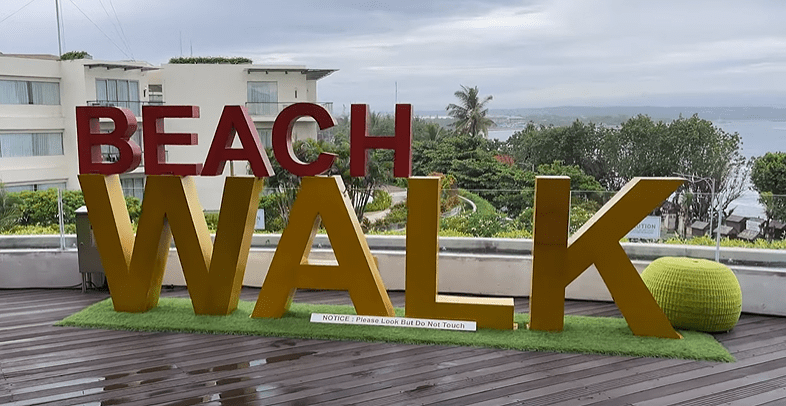
4. Bali in 7 days – Day 4

Tegenungan Waterfall



Today’s first visit will be to the famous Tegenungan Waterfall, located on the sacred Petanu River, about 10 km south of Ubud.
You have to go down about 250 steps, but it includes points where you can rest and take photos, so it’s easy.
The waterfall drops 15 metres and usually carries a large amount of water. It is surrounded by lush nature and forms a small pool at its feet, where you can bathe.
It is the most famous waterfall in Bali, so be prepared to see it full of people and be patient while taking your photos.
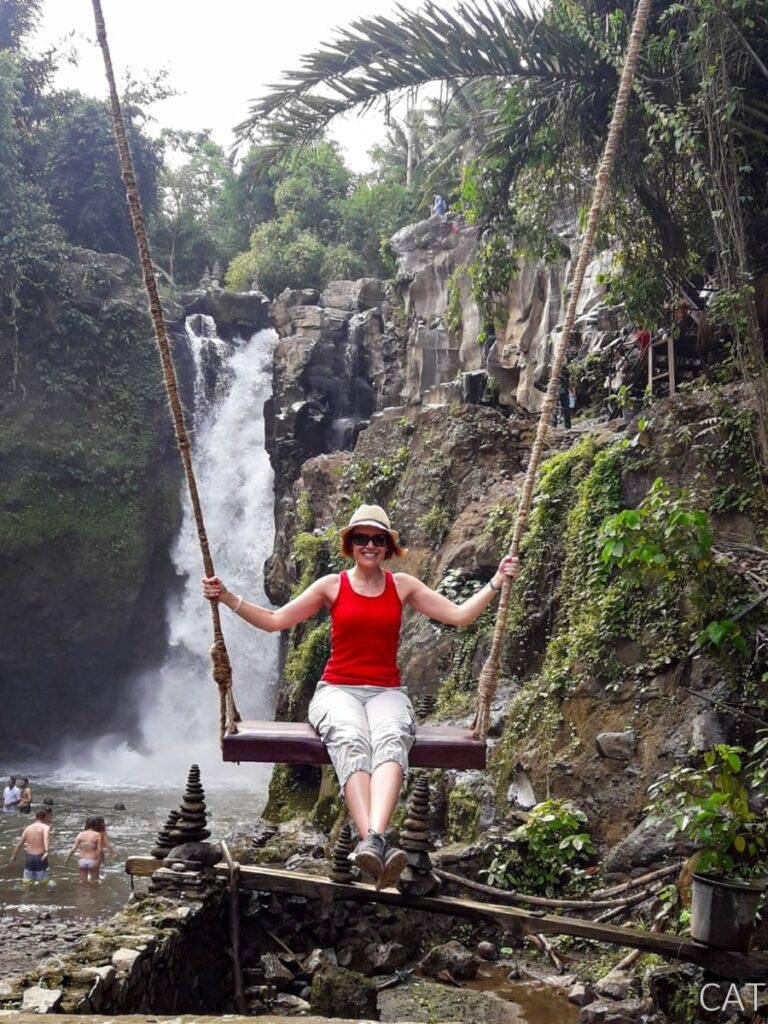
Goa Gajah Temple, or Elephant Cave
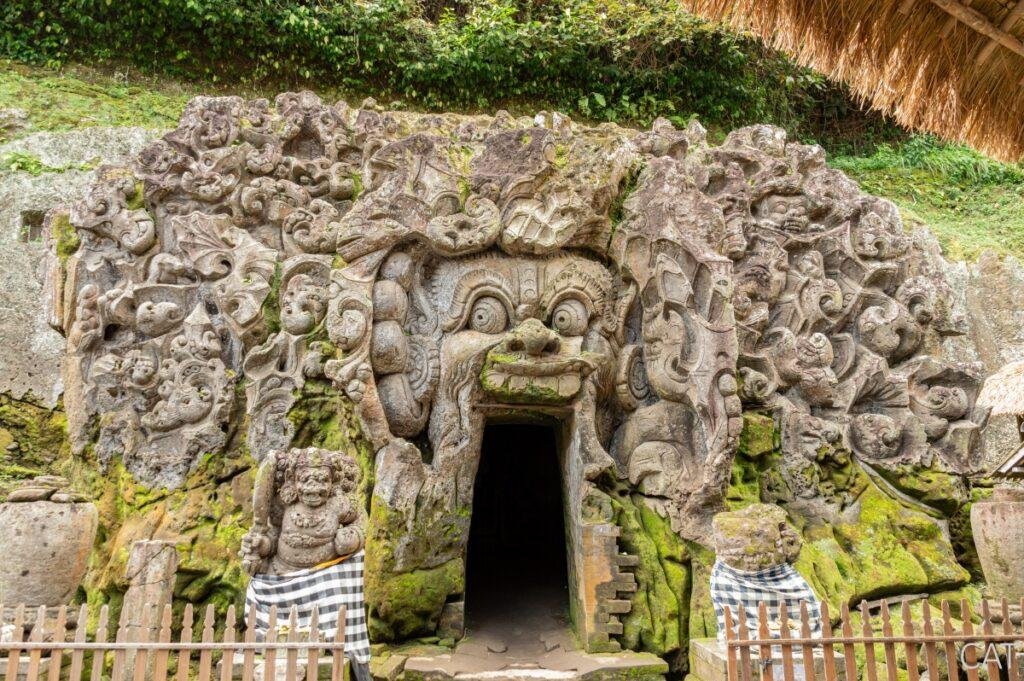
From the waterfall, we head north for about 8 km and arrive at the Goa Gajah Temple, also called Elephant Cave.
This important meditation centre, surrounded by dense vegetation, was built in the 11th century and contains both Buddhist and Hindu symbols.
The entrance to the cave is the image of an elephant carved into the rock, hence its name. Inside, you can see a sculpture of the god Ganesha, the son of Shiva. Additionally, it has three other very eroded statues representing Ratu Brayut, Ganesha, and Ratu Jempinis.


The enclosure is quite large, full of gardens, stairs, and several pools for men, women, and children to purify themselves before prayer.



It is a true gem that you should not miss.
Monkey Forest
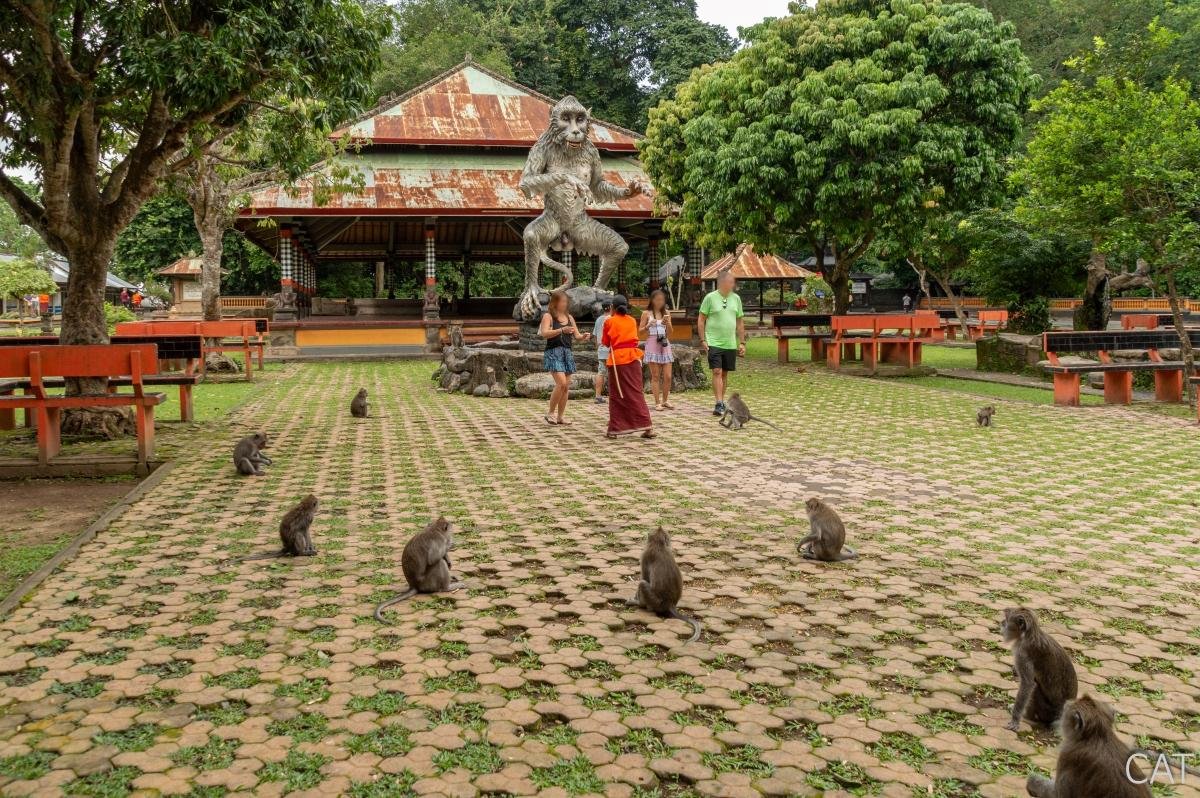
The Ubud Monkey Forest (Sacred Monkey Forest Sanctuary) is very close to the Elephant Cave (4 km) and Ubud (2 km).
It is a nature reserve and Hindu temple complex that is home to more than 1,200 long-tailed macaques, which the Balinese consider sacred. The temples are restricted to prayer only, and visitors cannot enter.


The enclosure covers an area of 12.5 hectares and is dedicated to conserving the area based on the Hindu philosophy of Tri Hita Karana (“Three paths to happiness”).
Some of the sanctuary’s recommendations for visiting are:

- Don’t panic; if any monkey jumps on you, he will soon get off. Drop the food and walk away slowly.
- If they approach you, stay calm; don’t scream or run because it can scare them.
- It is advisable not to carry valuables.
- Don’t look monkeys in the eyes.
- It is prohibited to feed the monkeys.
- Never touch, grab or bother them.
- Do not carry or hide any food or drink.
Taman Ayun Temple
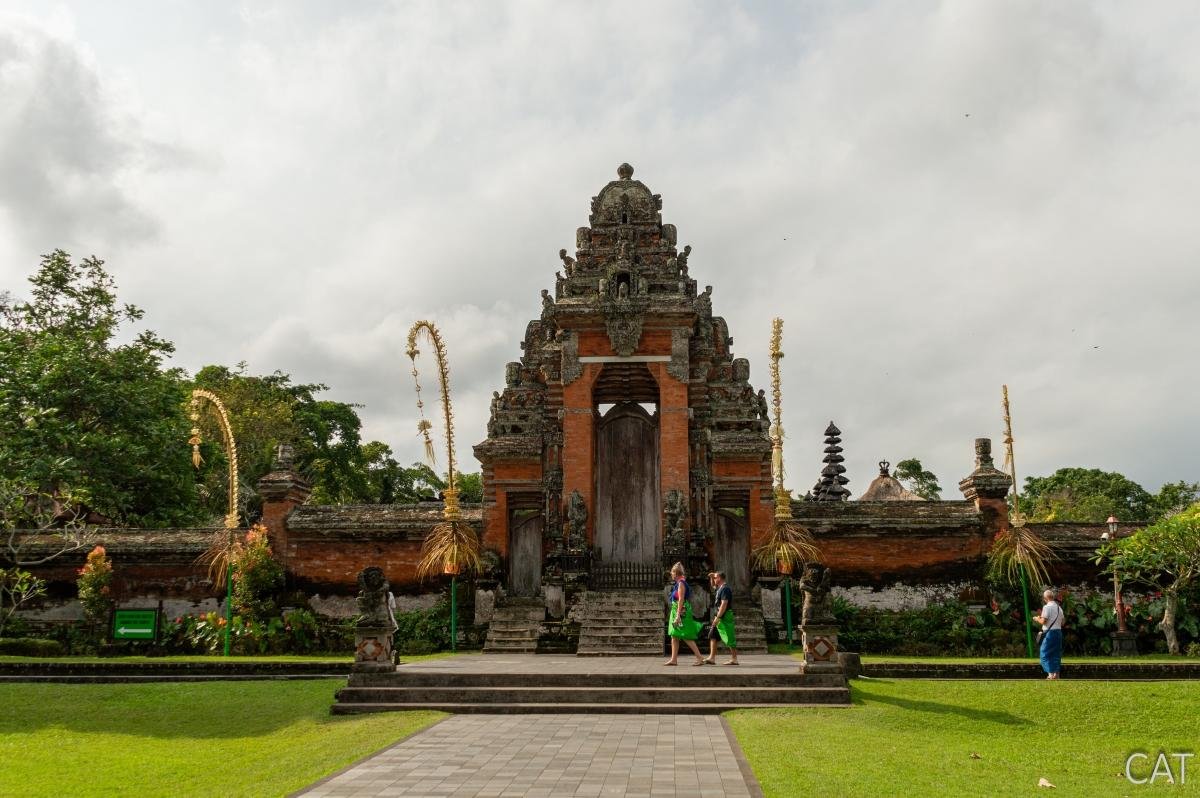
Less than 20 km to the west is the Temple of the Beautiful Garden (Taman Ayun).
It was constructed in 1634 and underwent restoration in 1937. This site consists of a series of sacred temples encircled by a canal and beautiful gardens.
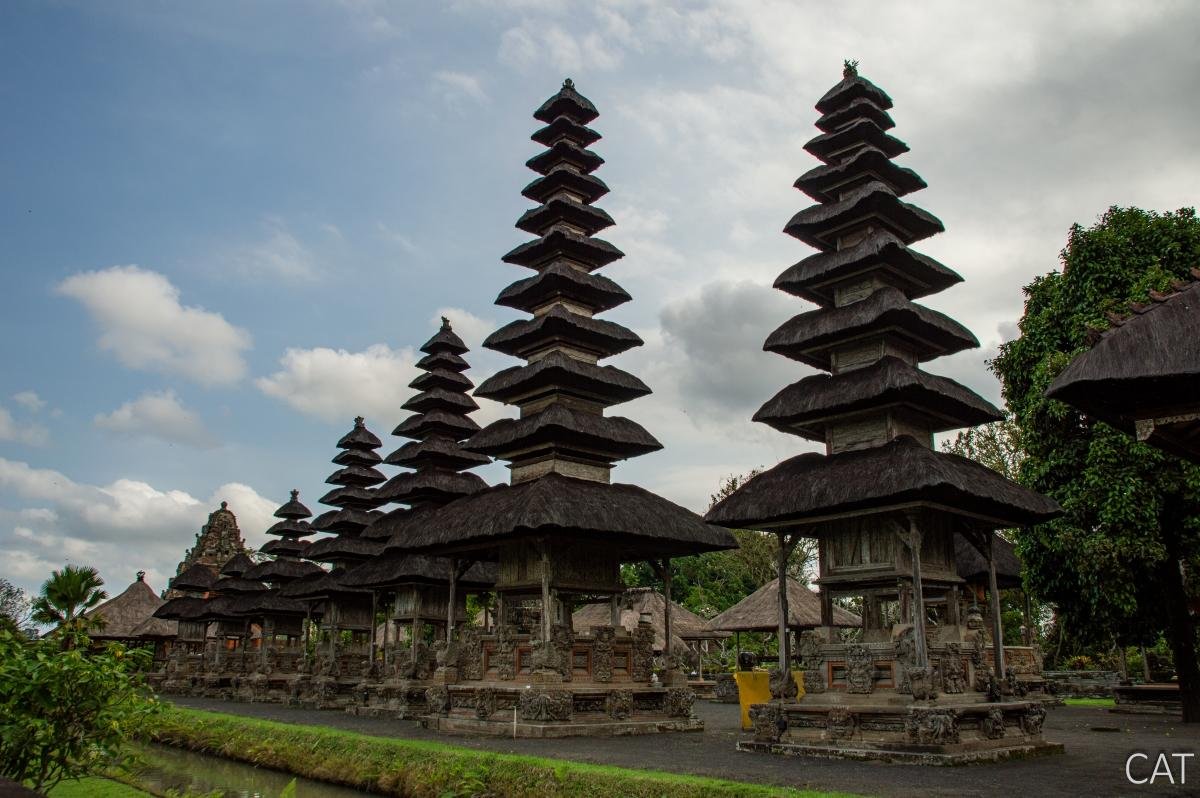
The temples have multiple levels, with each symbolising a higher level of spirituality. They have been part of the UNESCO Cultural Heritage since 2012.
Batu Bolong Temple

Continuing the route towards the southwest of Bali, along the coast, is the Batu Bolong Temple (Temple of the Hollow Rock).
This small Hindu temple is highly recommended for viewing the sunset in Bali, and for good reason. It is situated on a rock in the sea with a hole at its base, making it very photogenic.
As it is a place for prayer, it is not possible to visit the interior. However, just seeing the outside is worth the visit.
Tanah Lot Temple
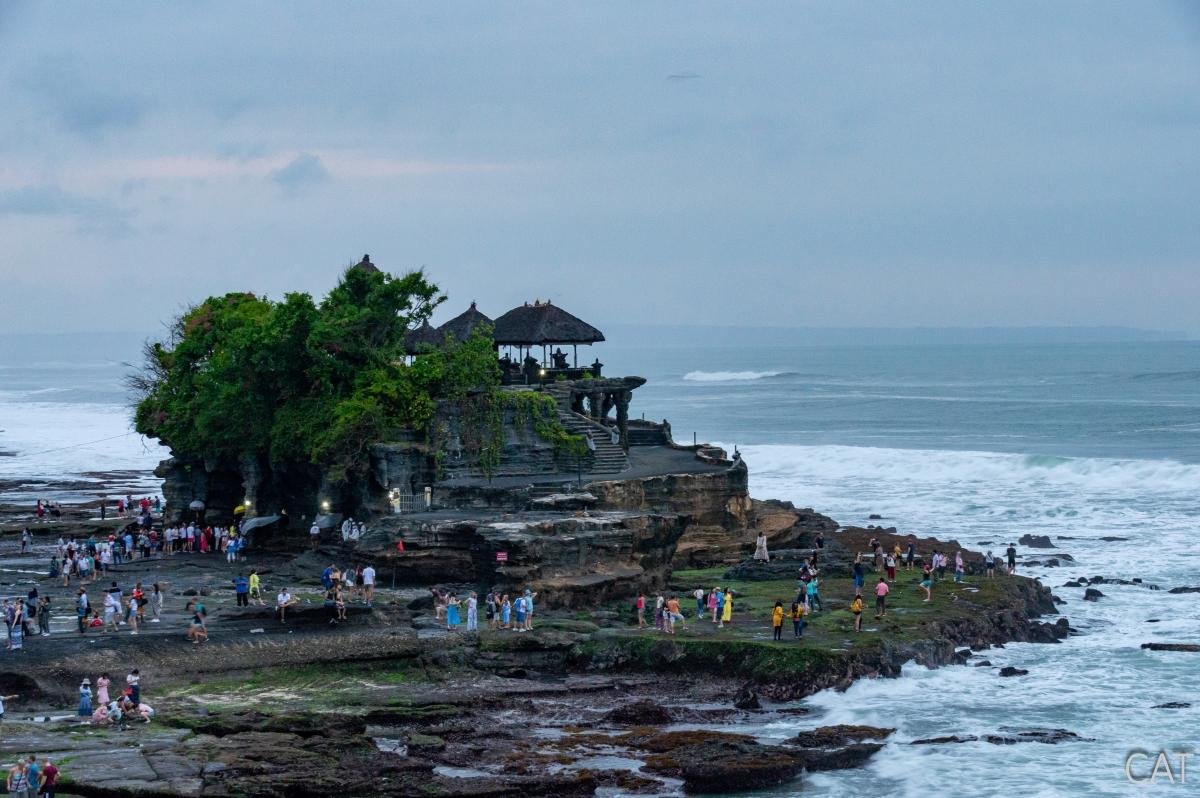
Just a 5-minute walk south is the Tanah Lot Temple (Temple of the Earth in the Sea), a must-see temple due to its location and beauty.
Located on an islet 100 metres from the coast, it is only accessible on foot when the tide goes out. This is another of the Hindu temples of great importance in Bali; it is dedicated to the god of the sea, and tourists are not allowed to enter inside.
As you can imagine, the picture is beautiful both at sunrise and at sunset.
Balinese Dance
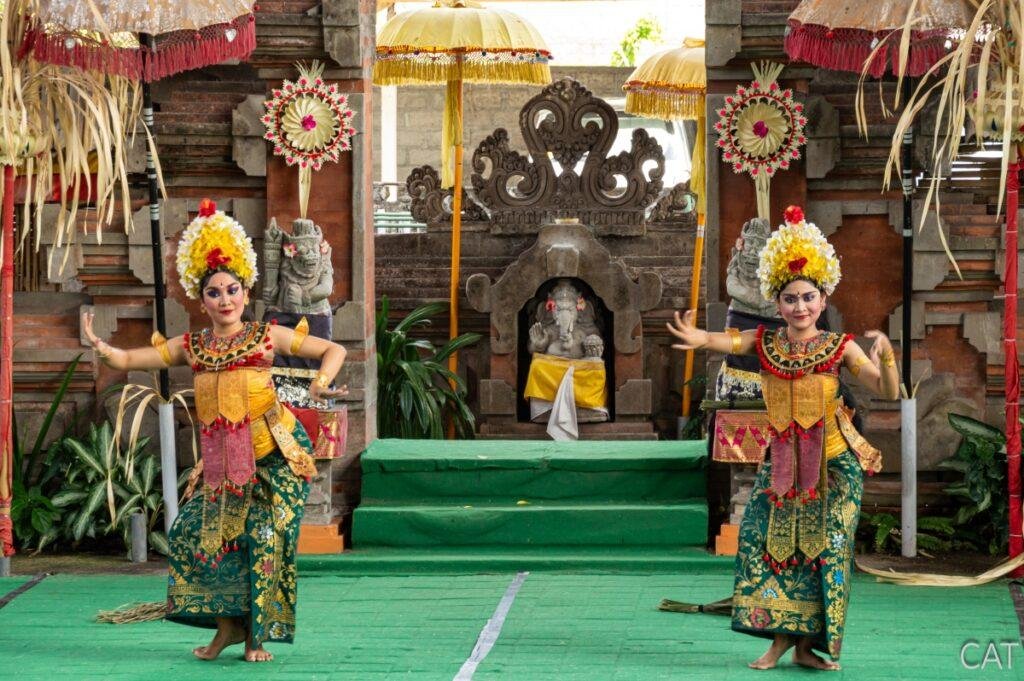
At the end of the day, we will watch traditional Balinese dance.
Balinese dance is well-known for its expressive gestures, intricate hand movements, and vibrant costumes. It typically portrays Hindu stories accompanied by gamelan music. Each dance combines grace, rhythm, and dramatic storytelling, showcasing Bali’s diverse cultural heritage.
In 2015, it was added to the UNESCO Intangible Cultural Heritage list.
5-6. Bali in 7 days – Days 5 & 6
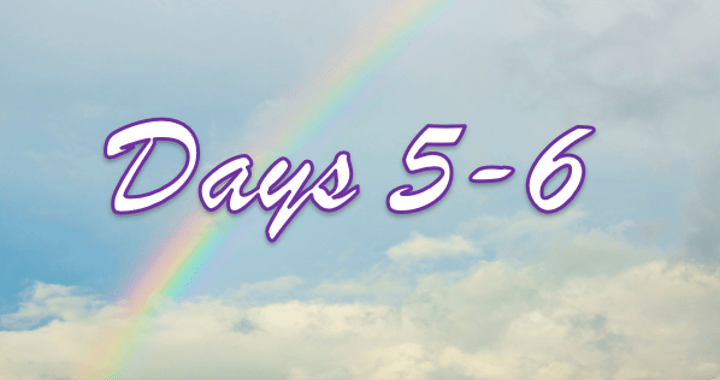
For days 5 and 6, we will be taking a trip to one of the nearby islands. Two groups of smaller islands near Bali are definitely worth a visit:
- Nusa Islands
- Gili Islands
I prefer the Gili Islands for their authentic and less touristy atmosphere. However, when I was there, an earthquake in Lombok and rough sea conditions prevented the boats from arriving, so my trip was cancelled. Luckily, I was able to visit the Nusa Islands instead, which are closer and also very beautiful.
Nusa Islands
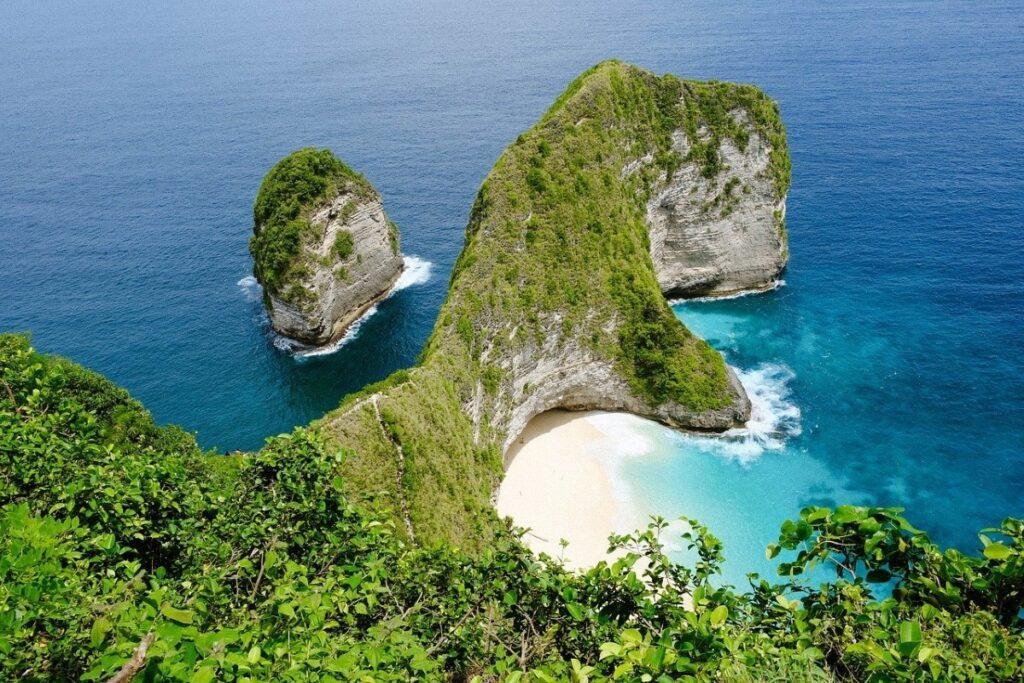
The Nusa Islands, located about 20 km southeast of Bali, are 3 easily accessible islands that can be reached in less than 45 minutes.
- Nusa Penida. It is the largest of the three, covering 203 km² (78 sq mi). Surprisingly, it remains the wildest and least developed. Here, you’ll be able to enjoy its exquisite beaches, imposing cliffs, and untouched natural surroundings.
The most famous image of this island is undoubtedly the spectacular Kelingking Beach. However, bathing in it is prohibited because it is very dangerous due to the waves and strong currents. Some other notable beaches include Diamond Beach, Broken Beach, Crystal Bay, and Atuh Beach.
- Nusa Lembongan is the second-largest island with an area of 8 km² (3 sq mi) and is the most visited among the Nusas. It features impressive coral reefs, cliffs, mangroves, and idyllic beaches, including Paradise Beach, Mushroom Bay, and Dream Beach.
- Nusa Ceningan. The smallest of the three islands, covering an area of 3 km² (1.2 sq mi), is connected to Lembongan by a yellow bridge, a landmark you’ve probably seen in many photos. Notable attractions include the Blue Lagoon, Secret Beach, and the underwater Buddha statues.
Gili Islands
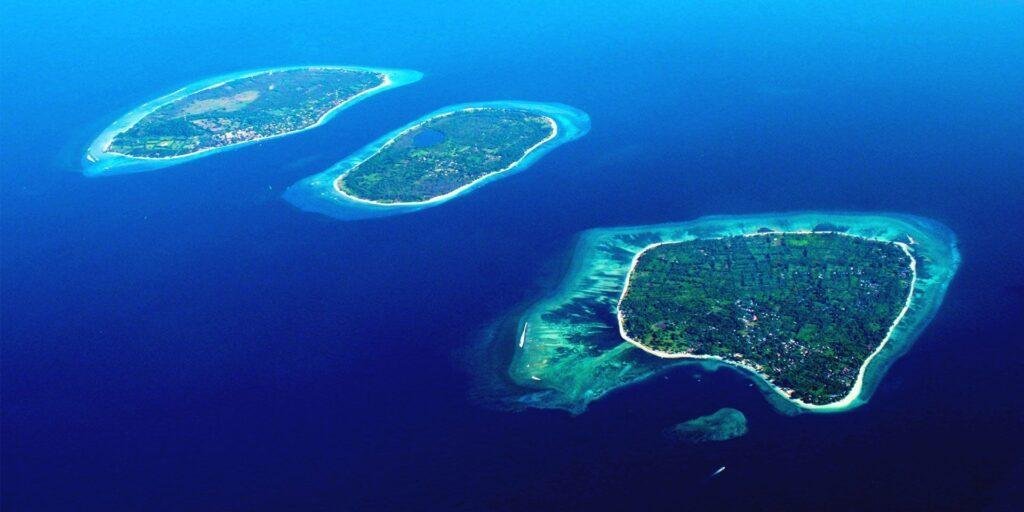
They are an archipelago belonging to the neighbouring island of Lombok, 62 km (39 miles) east of Bali. By fast boat, it takes about 3 hours, so it is not worth going just for one day.
The main attractions of these islands are snorkelling and diving due to the large amount of marine life.
The three most popular islands are:
- Gili Trawangan is the largest and most popular island among tourists. It offers a wide range of accommodations and restaurants. It is known for its vibrant nightlife, making it the perfect destination for party-goers. Backpackers and young people prefer it.
- Gili Meno. The smallest and quietest, it has the least to offer. It can be a good option for a half-day excursion to enjoy the most virgin waters.
- Gili Air. It is a middle ground between Gili T and Gili Meno. It is less crowded than the first, but it has more action than Meno.
📷 Tours & Activities: Book fun experiences, guided tours, and skip-the-line tickets in advance with GetYourGuide or Viator.
7. Bali en 7 días – Day 7
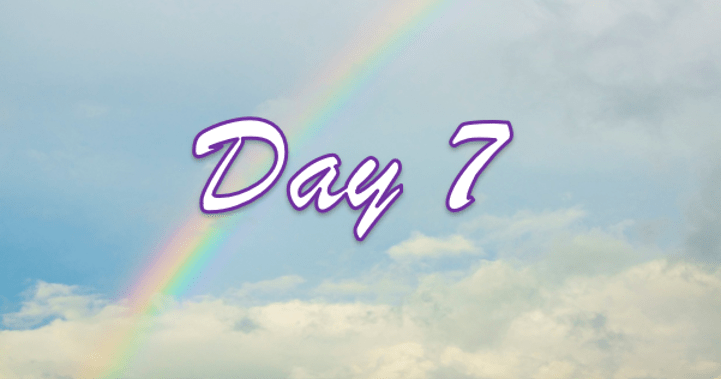
Once back in Bali, we will spend our last day visiting the places of interest we missed at a relaxed pace.
Goa Lawah Temple, or Bat Cave
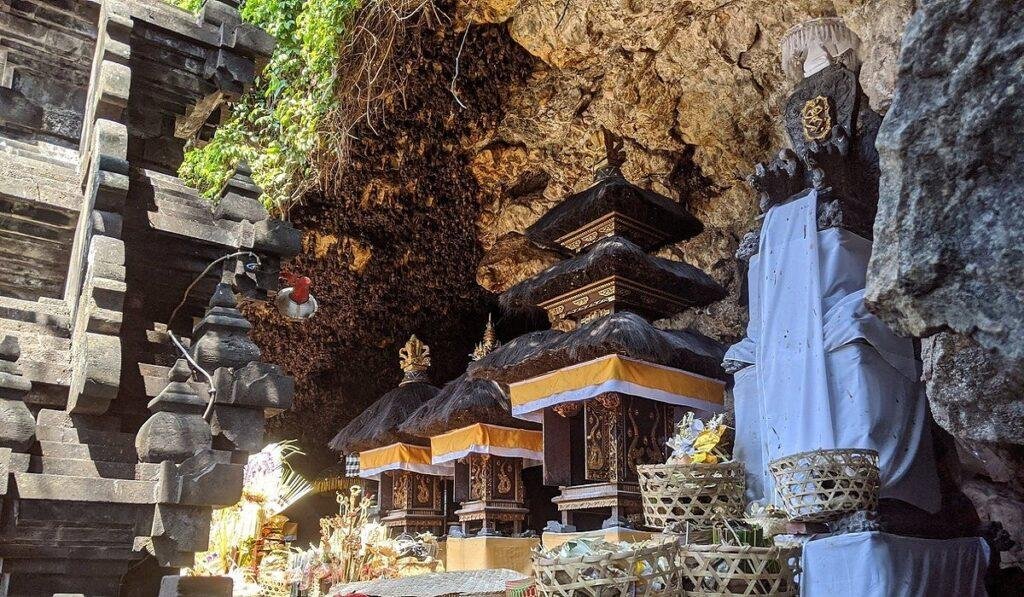
About 42 km from Legian, towards the southeast of Bali and next to the coast, is the Goa Lawah Temple. It is also known as the Bat Cave because its roof is covered by those small animals, which are considered sacred for protecting the temple.
The temple dates back more than 1,000 years and is linked to rituals to purify the soul of the dead after cremation.
It is a small temple that takes little time to see.
Besakih Temple
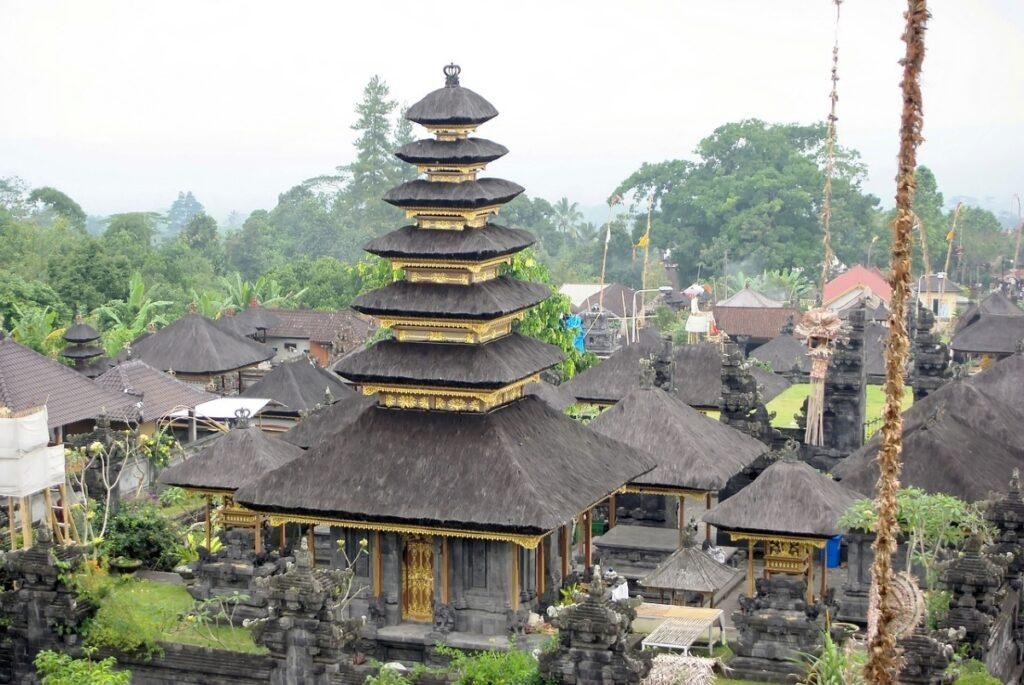
We continue about 32 km north to reach the largest, most significant and sacred Hindu temple in Bali: the Mother Temple of Besakih (Pura Besakih).
The site consists of several Hindu temples, the main one being Pura Penataran Agung. These temples are situated on different levels on the slopes of Mount Agung, the island’s central volcano.
It is considered a sacred site dating back to prehistoric times, although the specific construction date of the current temple is uncertain.
What is unique about this temple compared to the rest of the island is its magnitude and location.
Ubud Water Palace
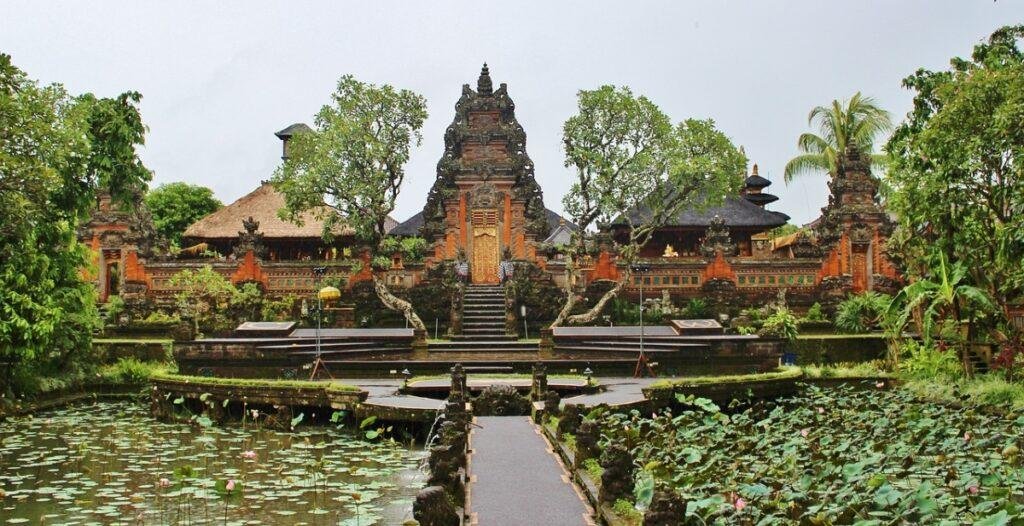
On our way back, we made a stop in Ubud to visit the stunning Water Palace, also known as Pura Taman Saraswati.
The palace was constructed between 1951 and 1952 to honour the goddess Saraswati, who is revered as the goddess of knowledge. As you enter, you will notice two ponds on each side, brimming with lotus flowers and fish.
The entrance to the Water Palace is free, but they do accept donations. However, the shows at the palace are not free.
Balinese Massage

To end the week in Bali in the most relaxed possible way, we are going to get ourselves a Balinese massage.
Influenced by traditional Chinese and Hindu Ayurvedic medicine, this type of massage activates energy points throughout the body. Furthermore, it is done not only with the hands but also with the knees, forearms, and feet.
There is a wide range of massage services in Bali. However, to avoid problems, we decided to go to a professional place with a good reputation.
Our choice was Rehat Massage & Reflexology in Legian. They are professional and friendly and offer good quality service, considering any injuries you may have.

It may be a little more expensive than other places you can find on the street, but it’s worth it!
Other things to do in Bali

If you have additional days, other things you can do while you are on the island are the following:
- Ubud Royal Palace (Puri Saren Agung). It was built between 1800 and 1823 and restored after the 1917 earthquake. The descendants of the last king of Ubud live there, so only part of it can be visited, but it is free. It is primarily known for its Balinese dance shows (not free).
- The Hidden Canyon of Beji Guwang is a stone wall shaped by a shallow river that has been sculpting the rock and creating impressive formations. It is basically a water activity, so be prepared with water shoes, not flip-flops, because you will have to jump between the rocks. At the entrance, there are lockers where you can leave your belongings.
- In addition to the waterfalls already mentioned, the island of Bali has many others, such as:
- Munduk
- Git Git
- Sekumpul
- Goa Batu
- Aling Aling
- Given its proximity, you can take advantage of the opportunity to stop in Singapore on the way in or out and stay for several days. It is a fascinating city, definitely worth a visit, and it will not disappoint you. Have a look at my article Discover Singapore in 4 days: itinerary with map, and you’ll understand why I say this.
Bye-bye, Bali.

I hope you enjoyed this itinerary to discover Bali in 7 days.
F. Ready to Book your Trip?
To help you organise your adventure, I’ve gathered the best tools I use and recommend for booking flights, hotels, local transport and more. These links support this site at no extra cost to you.
🧳 Book Your Trip Here
- ✈️ Flights: Compare the best prices on flights using Kayak.
- 🛏️ Accommodation: Find hotels and unique stays at great prices worldwide with Booking.com.
- 🚐 Transfers: Book your airport transfers or arrange transportation in advance with GetTransfer.com.
- 🚙 Private Driver: Hire a private driver for a full day with Viator and discover the island at your own pace.
- 📷 Tours & Activities: Book fun experiences, guided tours, and skip-the-line tickets in advance with GetYourGuide or Viator.
- 🌐 Internet Connection: Stay connected abroad with eSIMS from Airalo.
- 💺Transport (Bus and Train Tickets): Compare schedules and easily book intercity bus and train travel with Omio.
- 🚗 Car Rentals: Explore destinations at your own pace by using Discover Cars or Auto Europe to compare reliable car rental providers.
Safe travels! 🌏✈️
Additional Information
You can also check my itineraries in Itineraries. Here, you’ll find them classified in City Guides and Country Guides.
Alternatively, in the section Destinations, they are classified based on the type of trip:
- Amazing Experiences. It covers the most extensive and complete trips.
- Beach and Sea. For those who prefer quieter activities by the sea.
- City Breaks. Short trips with a single destination.
📌 If you prefer to see them separated by continents, check them in Portfolios.
Remember to check the Cook up Your Trip. There, you will find everything you need to organise your trip from start to finish.
If you need any clarification, you can leave me a comment or fill out the contact form. I will be happy to help you. 😊



